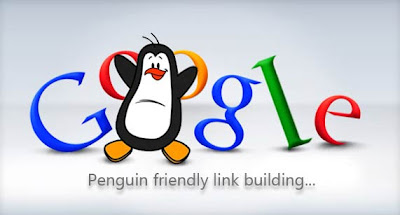It has been a while since the Penguin update was released by Google and there is still a lot of conversation about how to properly promote your website to stay within Google’s good graces. Today we’ve put together an overview of 3 top link building strategies for post Penguin success.
While this piece is not meant to be an all encompassing link building how to guide, it should give you some direction on your link building campaign. The biggest piece of advice we can give is that you need to have a link building campaign. Links are still very very important for ranking well in Google – you just need to go about it in the right manner.
Internal Page Linking
While this piece is not meant to be an all encompassing link building how to guide, it should give you some direction on your link building campaign. The biggest piece of advice we can give is that you need to have a link building campaign. Links are still very very important for ranking well in Google – you just need to go about it in the right manner.
Internal Page Linking

When people build links, it is natural for them to concentrate on building links to their main page. The home page is the landing page, that is typically where your main keyword phrases are located, and that is the easiest way to build links. The problem is that it is not the best strategy to build all your links to your home page.
Linking to your internal pages not only gives you a more diverse looking link profile (that is a good thing), but it allows you to target long tail keywords and very low competition phrases. These long tail keywords and low competition phrases are going to add up over time, each one bringing in some traffic. In addition, the link juice is going to flow through to the other pages of your site, so even if you are not building links to your home page, your home page is still going to see the benefit of these links.
Social Media Links

Social media is big. Facebook, Twitter, Linkedin and other sites such as Delicious, Stumbleupon and Pinterest – all these sites are social sites. Google is taking more and more social signals into account in their rankings, and if you don’t have social signals, your site is going to suffer. Not only is social media linking important now, but it is only going to become more important as social media continues to become ingrained in our daily life.
You should have a Facebook page for your site, and you should interact and post to that page regularly. You should have a Twitter account for your site. Pinterest is a good site that you can use very creatively. Linkedin is a great site for businesses, and you can create group pages there too. Of course we must also mention Google +, Google’s social site. Create a presence on these sites and participate with others in your niche. If you have good content, not only will you be building your own links, but others will begin to share your content. That is where the real power of social media links can start to kick in.
Diverse Linking
You have to have a diverse link profile. Social bookmarking, forum posting, articles, guest blogging, social media links, links from sites like Squidoo and Hubpages, links from related sites, even directory links and Wiki links. Create a diverse link profile and grow it in a diverse manner rather than focusing on only one type of link. In addition, continue your link building so you have a steady stream of activity to your site.
Not only do you need a diverse linking footprint with regards to where your links are coming from, but you also need a diverse linking footprint with regards to the keywords you are using for your anchor text. This is incredibly important, and we have written a blog post that goes hand in hand with this post – Anchor Text Distribution for Better Rankings. Combining proper anchor text distribution with a good mix of link sources can be a powerful combination, and is what Google seems to be looking for these days.
Good luck




























